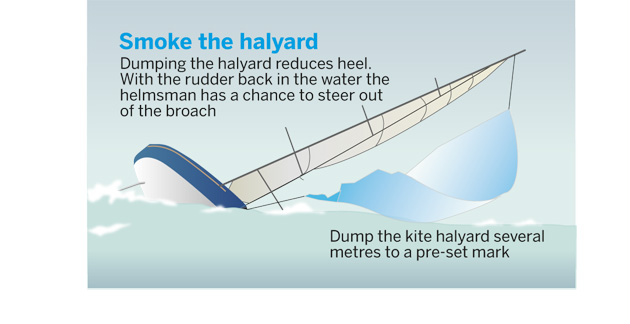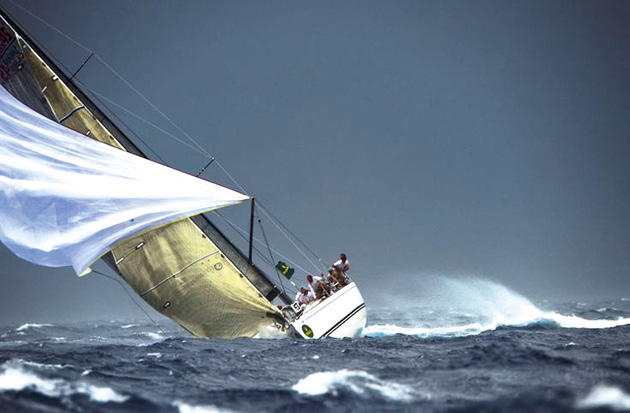You’ve lost it, but a quick recovery from a wipeout can save the day. Jonty Sherwill asked top match racer Ian Williams for his five tips on getting back upright
To keep a boat going on a gusty reach with kite and rudder on the edge and every gram of crew weight on the windward rail can be a nail-biting task. The precursor of a wipeout will often be a bigger than usual gust or hitting another boat’s wash.
A big dump of the spinnaker sheet with mainsheet and boom vang let go completely, plus some vigorous pumping of the helm might help reattach the vital flow, but when the rudder abruptly goes light and the boat spins to windward the crew must quickly switch to recovery mode.
Checking no one has slipped overboard is paramount. If all the crew are safely aboard, some key actions are needed to regain control. A practised team will know the routine and that a cockpit tidy up after the kite hoist will pay dividends; top of the job list is a flaked kite halyard ready to run.
1. Clear thinking
After a wipeout the big decision is whether to keep the weight up and back in the boat, to get it to bear away with the spinnaker still up, or to lower the spinnaker then rehoist once you have borne away.
It is important to know who is going to make that decision: the helmsman will often have the best feel, but it could be the person with the most experience, particularly if the helmsman is less practised.
2. Smoke the halyard
If you decide to drop the spinnaker partially, it needs to be dropped far enough to take the power out of it, but not so far that it goes in the water. One way to ensure this is to have a mark on the halyard in the appropriate place – but make sure it is very big and clear as it will be moving extremely quickly.
3. Hold the brace (guy)
On a boat with a spinnaker pole it is critical that you do not let the brace/guy go any further than the pole on the headstay. If you do, the spinnaker will power up even with the halyard off and prevent the boat from bearing away. You may then struggle to recover the spinnaker.
4. Use the jib
It’s usually too difficult to hoist the jib after a broach so it’s worth considering leaving it up downwind in a stronger breeze, as it will help you bear away after a broach. In most boats it should be possible with the spinnaker still fully up and flogging.
If you need to gybe the spinnaker, then leaving the jib up on a boat with a spinnaker pole may be impractical, especially if using the dip-pole system (eg Farr 40). But with an end-to-end pole or on an asymmetric boat it is possible and seldom slows you down in strong winds.
In some A-sail classes a Code 3 jib can also act as a staysail and improve downwind straight-line performance. If class rules allow, a furling jib quickly unrolled is the ideal kit.
5. Rehoist the spinnaker
Once the boat is borne away, you will need to rehoist the spinnaker. This manoeuvre will be different from a normal hoist, so consider a rehearsal or at least talk through the mechanics of getting it back up again as quickly as possible. Everybody is in a hurry to get the boat moving at speed once again, but if you set the spinnaker too early it will be a long wind to the top!
Ian Williams is a four times ISAF Match Racing World Champion and the only European to hold multiple match racing world titles. He is a ten times winner on the World Match Racing Tour with 29 podium finishes. He is also well known on the professional big boat circuit as a tactician and has been shortlisted twice for both the ISAF World Sailor of the Year Award and the British YJA Yachtsman of the Year Award







